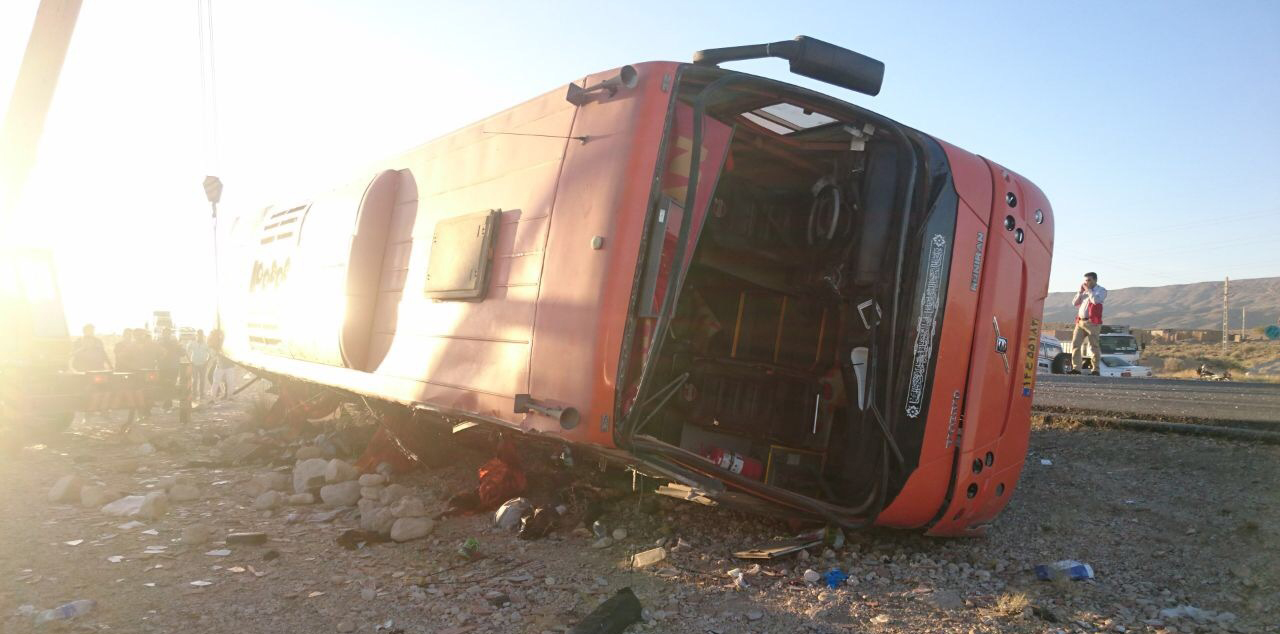The bus accident on Friday in the southern province of Fars, which was carrying 44 girl students on an educational trip, has once again raised serious concern about the safety of such trips for students.
Nine passengers (including seven students, a driver and a school official) were killed in the tragic accident and 35 students were injured. The bus overturned in the dark hours of dawn at 4 am near the city of Darab, 170 km southeast of the tourist city of Shiraz.
According to police reports, the driver’s dizziness was reported as the cause of the fatal accident that cut short the lives of innocent school children, ISNA reported.
School trips are regular events, organized by the Education Ministry as part of its recreational training programs. According to a ministry official, Mahmoud Aligoo, 14,000 students have taken part in school trips this year.
Over the years such school picnics and study tours have brought in their wake pain and grief of epic proportions for parents and family members of the students who went for a holiday but their dead bodies came back.
In one of the most tragic incidents in October 2012, as many as 26 high-school students from Brujen in Chaharmahal and Bakhtiari Province were killed and 18 were injured when their bus overturned.
The students were on a field trip to the Iran-Iraq war zones in southern Iran as part of their school curriculum.
Another incident, which left a lasting mark on the nation’s memory, happened in March 1998, when a bus carrying the participants in the Mathematics Olympiad lost control and crashed in the southern city of Ahvaz. Seven students, all among the best in mathematics, were killed. Maryam Mirzakhani, the Iranian math scholar who died of breast cancer this year in the US, was among the survivors of the crash.
The Education Ministry on Sunday announced a temporary suspension of all school trips at night (except air or rail travels) saying that it is reviewing the guidelines for organizing such tours.
One can only wonder why the ministry and its army of officials do not take the trouble to “review” the tours in advance despite the fact that children have lost their lives on the roads on a regular basis over the past several years.
As often is the case, neither school officials nor higher-ups in the ministry accept responsibility for the deadly car mishaps. The ministry now says it has appointed a team to review the causes of accidents in school trips and prepare a new set of rules for such trips.
Poor Road Safety
Iran has one of the highest rates of road accidents in the world. Annually over 20,000 people are killed and 800,000 people are injured in road crashes.
Road accidents in Iran are attributed to several reasons, namely careless driving, flouting traffic rules, speeding, the bad conditions of inter-city highways and roads and poor quality of domestically manufactured vehicles, some of which lack international safety standards.
Most observers believe the main cause of the high death rates is the intentional lawlessness of motorists and their shocking failure to respect road rules and regulations.
Respected social scientists have rightly pointed out that cars, roadways, signboards in the country have all become much better and bigger over the years but the death rates have not reduced as expected.
What indeed is lacking, they insist, is the other side of the equation: rule of law, higher levels of decency on the road along with social, moral and ethical development of the masses, especially the youth.


